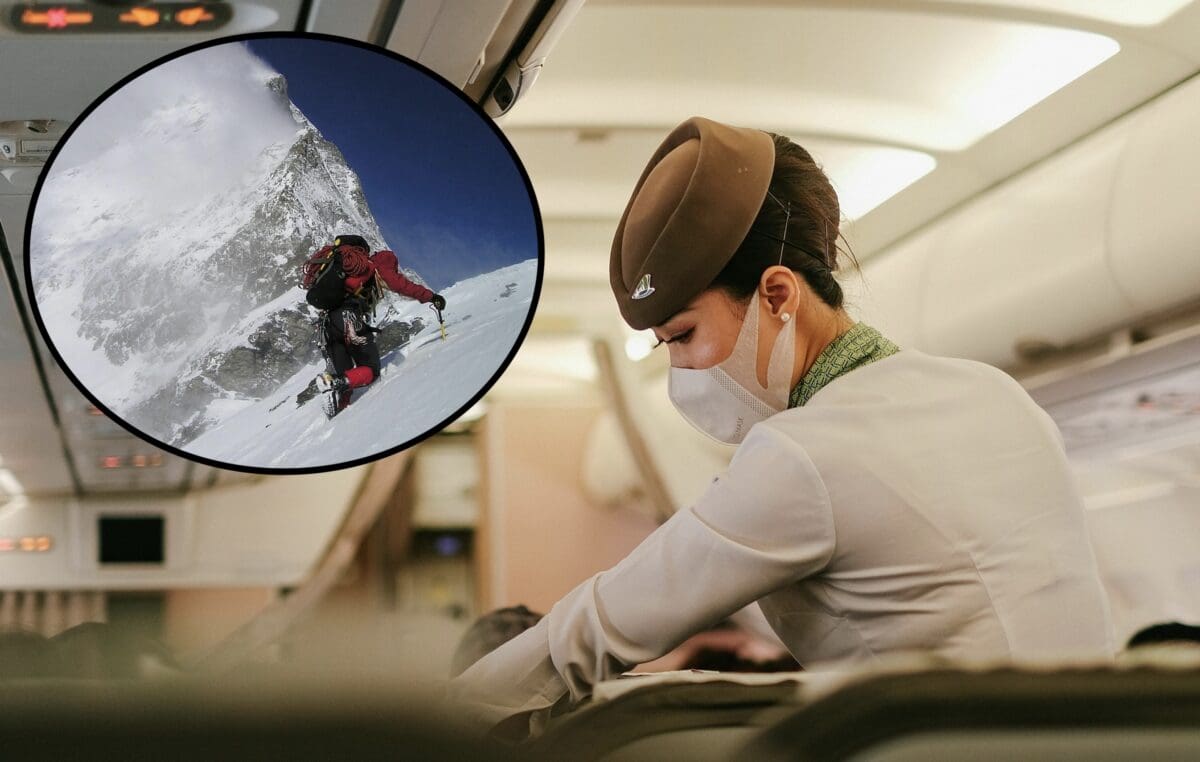Ever wondered why are airplane farts so common during flights?
Ever noticed that airplanes turn into a symphony of silent-but-deadly farts? You’re not imagining it—something about being 30,000 feet in the air makes everyone a little… gassier. And, believe it or not, this high-altitude toot-fest has a surprising link to mountain climbing and explains why airplane farts are prevalent.
Why Airplanes Turn You Into a Fart Machine
So you’re cruising at 35,000 feet, the seatbelt sign is off, and your viewing of The Shawshank Redemption is being ruined by someone constantly ripping it. Why does flying make you so gassy? Let’s break it down. It’s important to address why airplane gas emissions are so common to understand this natural phenomenon.
- Cabin Pressure: HAFE and The Fart Factory
At high altitudes, the lower cabin pressure causes gases in your body—thanks to airport taco—to expand. This is where High-Altitude Flatus Expulsion (HAFE) crashes the party. HAFE is the scientific term for the increased gas production you experience at altitude, whether on a plane or a peak. Studies suggest gas in your digestive system can expand by up to 30% during a flight. These insights explain why airplane farts are more common than at sea level. - Dehydration and Digestion Shenanigans
The dry air in airplane cabins dehydrates. This slows digestion, leaving food fermenting in your gut longer than usual. The result? You might wonder why airplane farts are so prevalent. A buildup of gas that’s ready to make its grand exit, usually when the drink cart blocks the aisle. Want to stay hydrated on your next adventure? - Stress: The Silent Toot Trigger
Flying can be a stress-fest: long security lines, cramped seats, and the guy stealing your armrest. Stress hormones like cortisol mess with digestion, leading to more gas. It’s like your body saying, “Turbulence? Let’s add some internal turbulence!” - The Altitude Appetite (and Gas) Connection
At high altitudes—whether you’re scaling a peak or sipping soda in the sky—lower oxygen levels mess with your metabolism, making your digestive system overzealous. Just like climbers feel bloated on a mountain, your body on a plane thinks it’s on a survival mission, producing extra gas as it processes that in-flight meal. We have a great piece on how climbers fuel up (and deal with gas) at altitude.
The Mountain Climbing Connection: It’s a Gas, Gas, Gas!
So, what’s the deal with mountain climbing? Whether you’re trekking up K2 or surviving a red-eye flight, high-altitude environments mess with your body in similar ways. The reasons for why airplane farts are a part of the experience become clearer based on altitude effects.
- Pressure Changes Play a Role
Mountain climbers often experience bloating and gas as they ascend to higher altitudes where air pressure drops. The same happens on a plane. Your body doesn’t care if you’re conquering a summit or a middle seat—it just knows the pressure’s low, and it’s time to let the gas loose. For more on high-altitude quirks, check out Unofficial Networks’ guide to mountain mishaps. - Stress and Survival Mode
Both flying and climbing are high-stakes (okay, maybe flying to Disney World is less intense than summiting K2, but bear with us). Sometimes you wonder, why are airplane farts so common in stress situations? Your body goes into mild survival mode, tweaking digestion and increasing gas production. Climbers chug energy drinks and protein bars, which can lead to epic trail toots. On a plane, that second helping of mystery pasta does the same trick, explaining why airplane farts are so common. - The Great Equalizer: No Escape
On a mountain, you can blame the wind for carrying your farts away. On a plane? You’re trapped in a metal tube with 200 strangers, and the air recirculation system isn’t doing you any favors, highlighting a reason why airplane farts are unavoidable.
How to Keep the Air Clear (Sort Of)
Before you swear off flying or start packing a gas mask, here are some lighthearted tips to tame the toots:
- Choose Your Snacks Wisely
Skip carbonated drinks and gas-inducing foods like beans or broccoli at the airport. Opt for light snacks like bananas or crackers. Your seatmates will thank you. - Stay Hydrated
Drink plenty of water to keep digestion on track. Dehydration makes gas worse, and nobody wants to be that person on the flight. - Move Around (If You Can)
A quick stroll to the bathroom (or just standing to “stretch”) can help move gas through your system before it stages a coup. Just don’t blame us if the snack cart blocks the aisle. - Laugh It Off
If a toot slips out, own it with a grin. We’re all human, and airplanes are basically fart factories in the sky. A little humor goes a long way!

